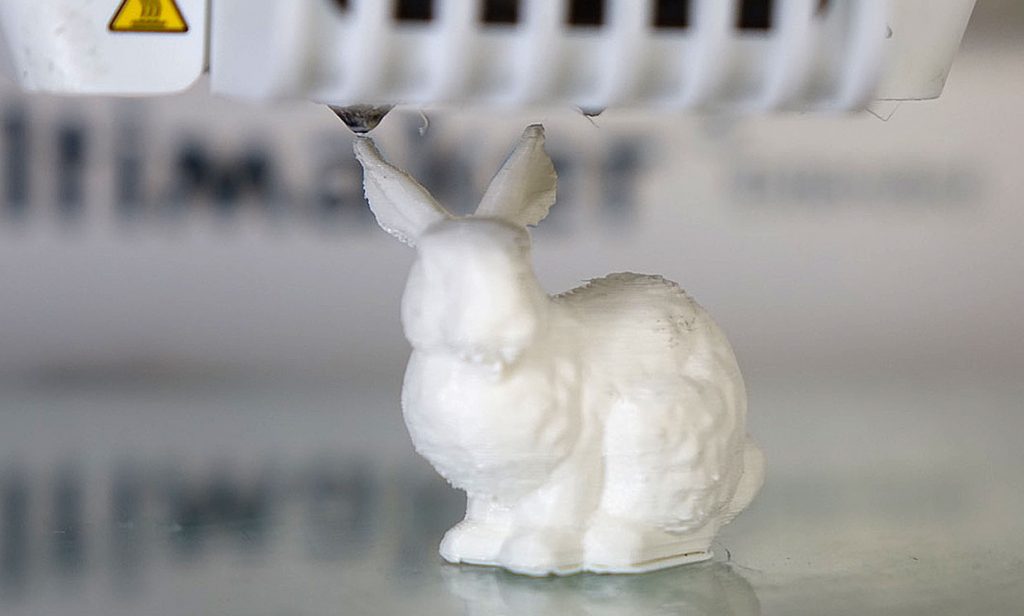A group of scientists at ETH Zürich has discovered a means of instilling 3D printed objects with their own DNA. Contributing to a field of research exploring DNA’s potential for data storage, the team demonstrated these capabilities by 3D printing a Stanford bunny model encoded with its own .stl.
Deemed the DNA-of-things (DoT), such technology has implications for the creation of more versatile, high-capacity information stores and protecting sensitive data. “It may also facilitate,” the research states, “the development of self-replicating machines.”

DNA as data storage
DNA is composed of a sequence of four letters, each representing a chemical building block of life. For data storage, each of these letters (A, T, G and C) can be assigned to a piece of information, as in binary code, and sequenced to record a complex set of data. Applying these basic principles, another team from Boston-based technology startup Catalog, a company that specializes in such a process, recently reported that it had successfully encoded all 16 GB of Wikipedia into synthetic DNA.
As the world increasingly relies on data storage solutions, DNA is emerging as an alternative to flash drives and hard drives. One of the potential advantages is that DNA data could potentially occupy less space than these devices. I can also take on any shape. “If you think about any other storage technology, whether it’s tapes or discs or hard drives, they require a certain type of geometry. A tape is a tape. A disc is a disc,” explains Yaniv Erlich, ETH Zürich collaborator and chief science officer at DNA-based genealogy service MyHeritage.
“DNA is the only storage technology that doesn’t have a defined geometry on the macroscopic level.”
Self-replicating rabbits
The Stanford bunny example given by the team at ETH Zürich is a model made from a specially synthesized material. The .stl file for the bunny was translated by the team into a four-digit code. This code was synthesized into a corresponding DNA sequence.
The DNA sequence was encoded onto oligonucleotides, synthetic strands of nucleic acid that builds up DNA, before encapsulating within silica nanoparticles. The DNA-containing nanoparticles were then mixed with a thermoplastic and extruded as a filament for 3D printing.
Completing the cycle, small samples of the material were cut from the 3D printed bunny models, effectively used to “clone” the original object. Five generations of the model were 3D printed, each using a sample removed from the last.
Though the data degraded a little each time, (with more than 20 percent of information missing from the fifth generation) the team’s decoding program, DNA Fountain, was able to fill-in missing data and still produce the same object.
.stls however are not the only type of information that could be stored on strands of DNA. In a further experiment, the team proved the ability to store a 1.4 MB video on DNA within plexiglass spectacle lenses.
The paper discussing ETH Zürich’s method, titled “A DNA-of-things storage architecture to create materials with embedded memory“, is published online in Nature Biotechnology journal. The paper is co-authored by Julian Koch, Silvan Gantenbein, Kunal Masania, Wendelin J. Stark, Yaniv Erlich, and Robert N. Grass.
Subscribe to the free 3D Printing Industry newsletter for the latest research developments. You can also stay connected by following us on Twitter and liking us on Facebook. Looking for a career in additive manufacturing? Visit 3D Printing Jobs for a selection of roles in the industry.
Featured image shows ETH Zürich’s 3D printed Stanford bunny models, made to contain its own .stl file. Photo via ETH Zürich



